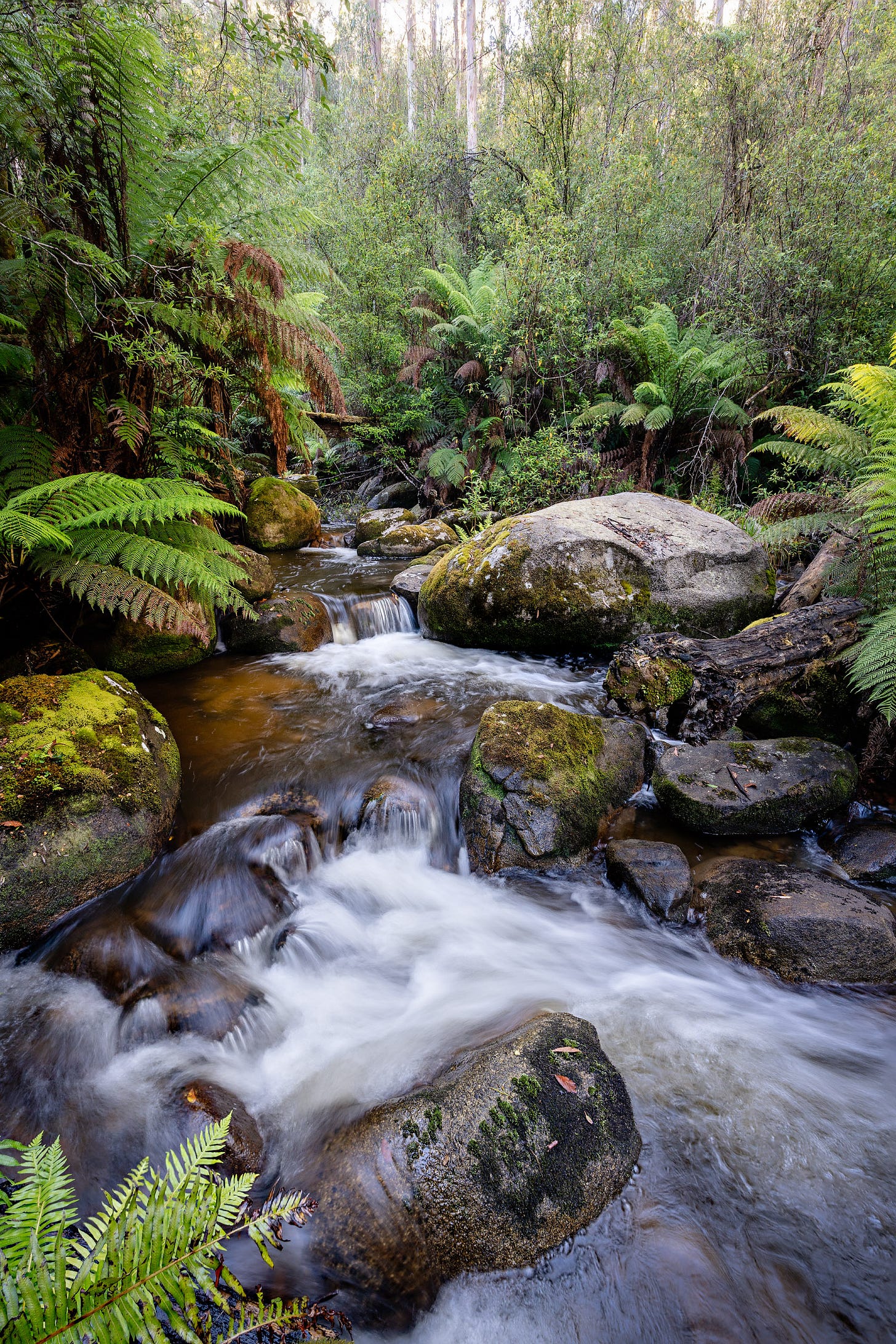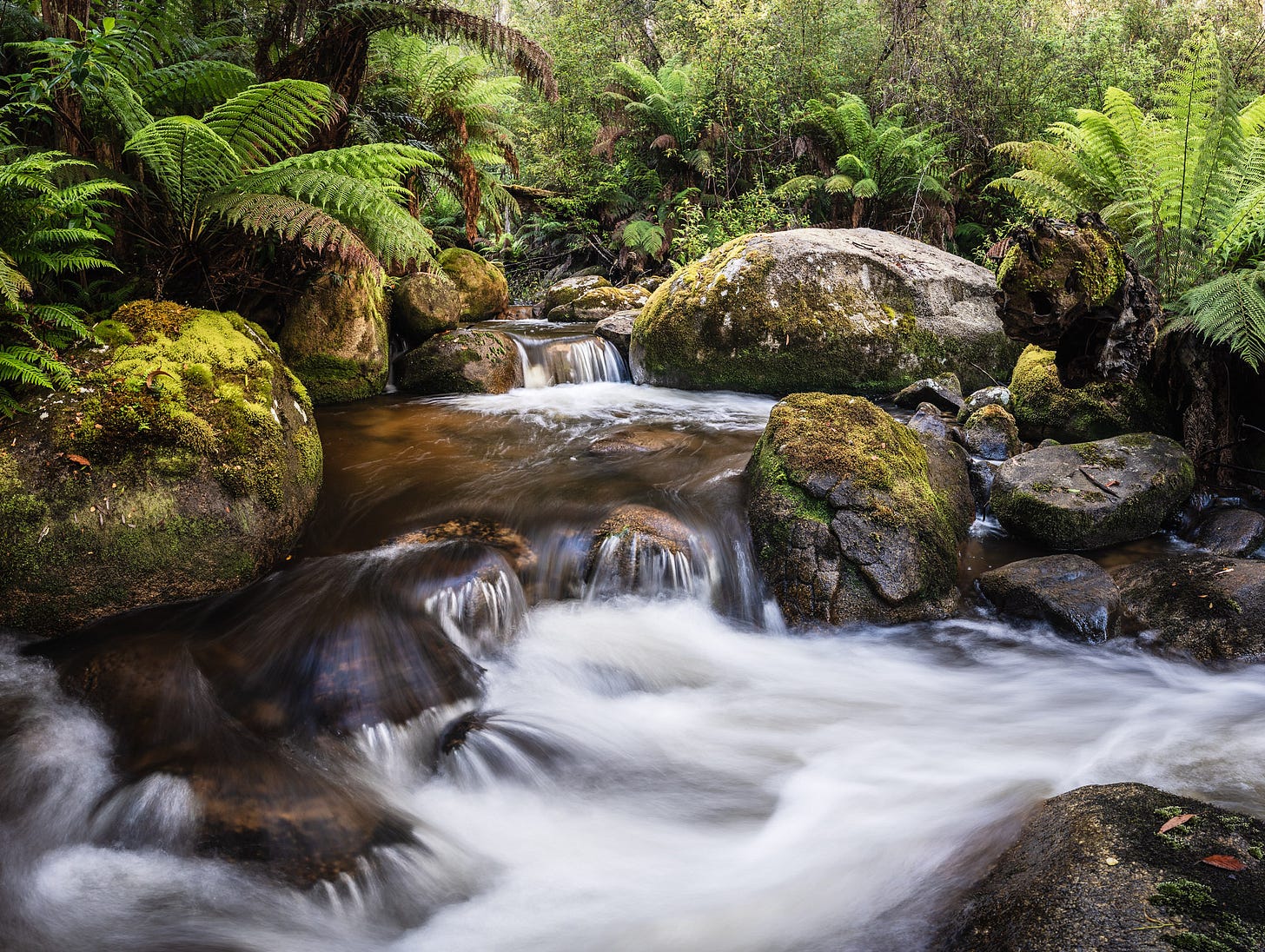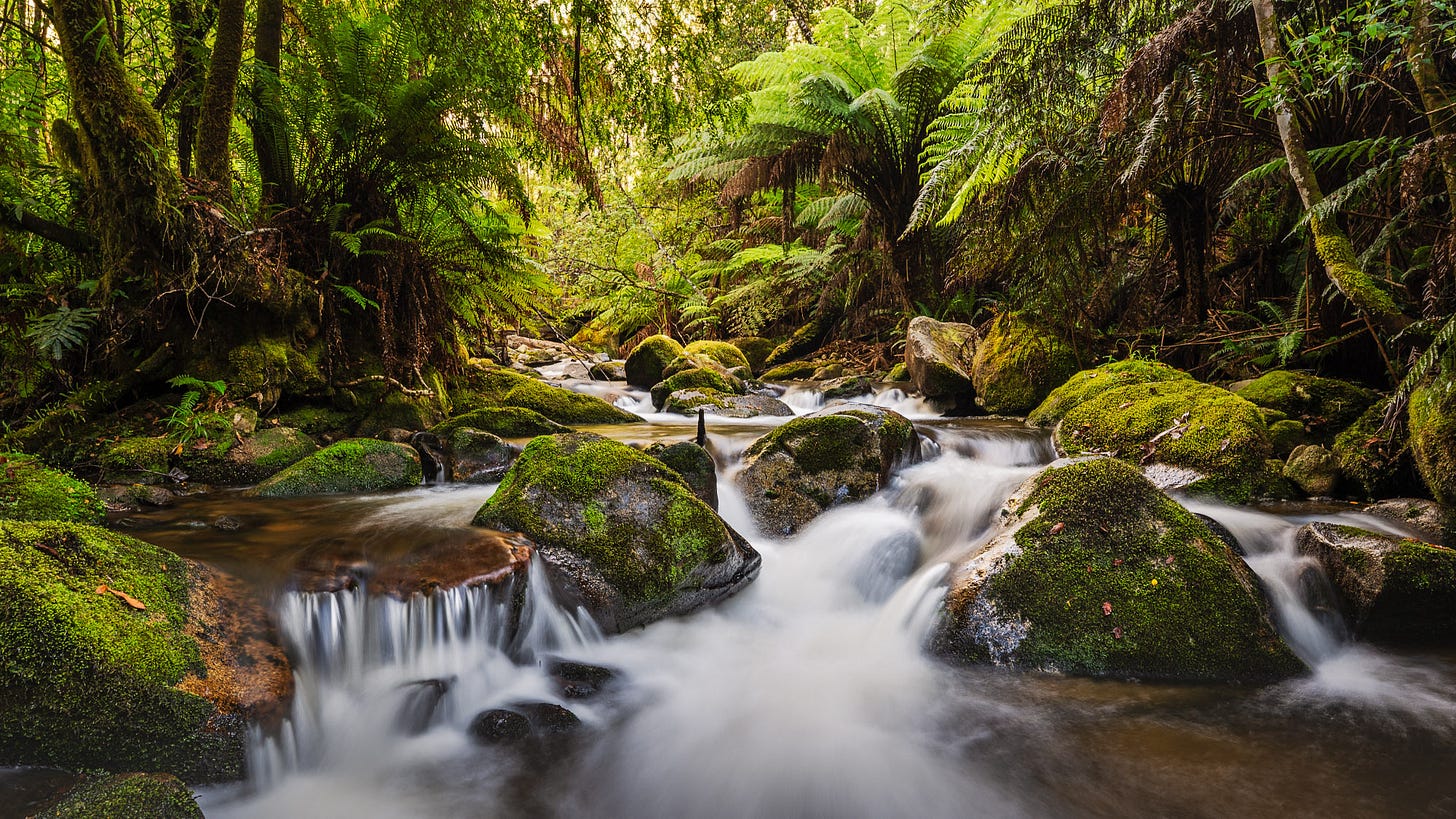It’s enough
Racing the sun
Although it was still dark, I knew the sky above me was cloudless; a warm, clear summer’s day would soon be starting. As would my race against the sun.
I was heading towards a river in the Central Highlands that I had tried to photograph before – tried and failed1.
Last time I had decided on an ambitious bushbash to a section of river that looked highly prospective for good images – the steep contours suggested a rapidly falling river that would typically be full of moss-covered boulders surrounded by temperate rainforest. And so it was; the only problem was that by the time I got through the scrub I was wet and cold and had no time to take photos.
This trip was less ambitious. A shorter walk in and less bushbashing, so I was confident I would reach the river fairly quickly but the terrain was flatter and so perhaps less photogenic. And that sun. The section of river I was aiming for was orientated north south, so was likely to be in shade for a while, but heading upstream, the river turned east and would be in harsh, direct sunlight early on.
The walk to the end of the overgrown management track was easy enough in the pre-dawn light. Then there was a choice of rough trails through fairly open forest to traverse across the slope, parallel with the river.
Only 45 minutes into the walk and I had to make the most important decision – where do I turn downhill? I wanted to find a point directly above the section of river I am targeting to minimise the pushing through thick scrub and the time taken to start looking for images. Already I was feeling the pressure.
I found my spot and committed. Of course, within metres what I thought was a possible path became a thick tangle of cutting grass, ferns and thick bush. You can try to take a considered approach picking your way down, but I have found this is too slow and pointless – there is no best way – and instead of thinking, just do it.
I can see the sun hitting the upper portion of the valley on the other side of the river. It seems to be relentlessly moving down to the hillside towards the river. But on this side of the river, I am making good progress. It’s a race.
I almost fall out of the bush when I reach the river. I almost immediately see a possible scene. In my rush to take advantage of the shade, I take a couple of images where I stand. I quickly realise the composition is not right, in particular a fallen trunk that is clumsily blocking the view of a boulder.
Moving slightly to my left, I perch on a rock and suddenly things line up. I take one bracket at 24mm and realise the problem. I put on my 16-35mm f4 and the vertical composition takes shape. I take 4 bracketed images for focus stacking and in case the highlights get blown out. This is the image below and my favourite for the morning.
I then tried to capture the same scene as a vertical panorama in landscape orientation. I had a feeling (correctly as it turned out) that I would be demanding too much of Lightroom to stitch such a wide pano together, especially at 16mm.
So I tried a 5 image horizontal panorama in portrait orientation (bracketed again, although I didn’t need it). Barely moving the tripod and another nice image.
And that, my friends, was it. I walked upstream, knowing that the light was already too bright and I only had perhaps 15 minutes before the direct light hit me. As the sun rose, all the challenges of harsh light in a forest emerged - bright patches on foliage and the ground, very dark shadows and specular highlights, and glare on the water that no amount of polarisation will stop (especially looking directly towards the light).
The image below was taken upstream before the sun hit the river, but it shows the problem of a very bright sunlit background. Unprocessed, the image has very bright patches everywhere and very dark shadows. By opening up the shadows I have reduced the contrast and made an okay image, but it is busy and without much depth.
After this image, I turned downstream to scout out the stream. After a fair bit of scrambling over logs deposited by long past floods, I became tired of following the river. I make the call to head uphill, battling through the thick scrub to meet the management track and then easy walking downhill to the car.
Much of my photography is about showing the beauty of the natural world. It’s about chasing the light, finding compositions and making (hopefully) a compelling image. As I hope this essay conveys, this process is its own reward.
There are other reasons why I take landscape photographs beyond the taking of photos and exploring the bush to see what is there. At a deeper level, these trips are also an opportunity to explore my relationship with the landscape and to reflect on how society values nature.
That’s why I came home that morning satisfied. Yes, I got a nice photo or two, but more importantly I built my knowledge of what was there and came away with some questions about this landscape. It will be these questions that define a bigger purpose and provide direction for future photography projects about what the Central Highlands mean to me, the stories I want to tell and how this might be achieved photographically.
Apologies for the philosophising. Sometimes its enough just to enjoy a beautiful summer’s morning, spent in a mountain creek surrounded by Mountain Ash and rainforest in the shade of a mountain.
Read more here
Fieldcraft
Finally, I stood in the misty rain looking across the mountain stream cascading down the side of the Baw Baw plateau in Victoria’s Central Highlands. I paused to catch my breath and take in my surroundings.







Beautiful images as always James. I love the horizontal pano which is the stand out shot for me. The more intimate nature of this composition really draws me in and the flow of the water is lovely. I also really like the last image of the round boulders and the water.
Someday I will visit Australia!!
Thank you for sharing its beauty with us.